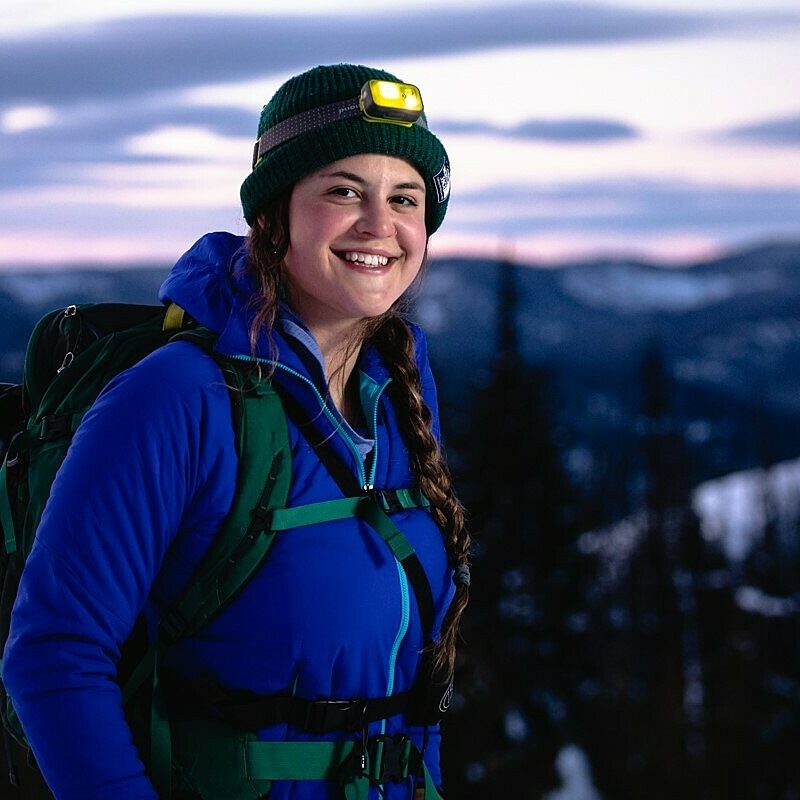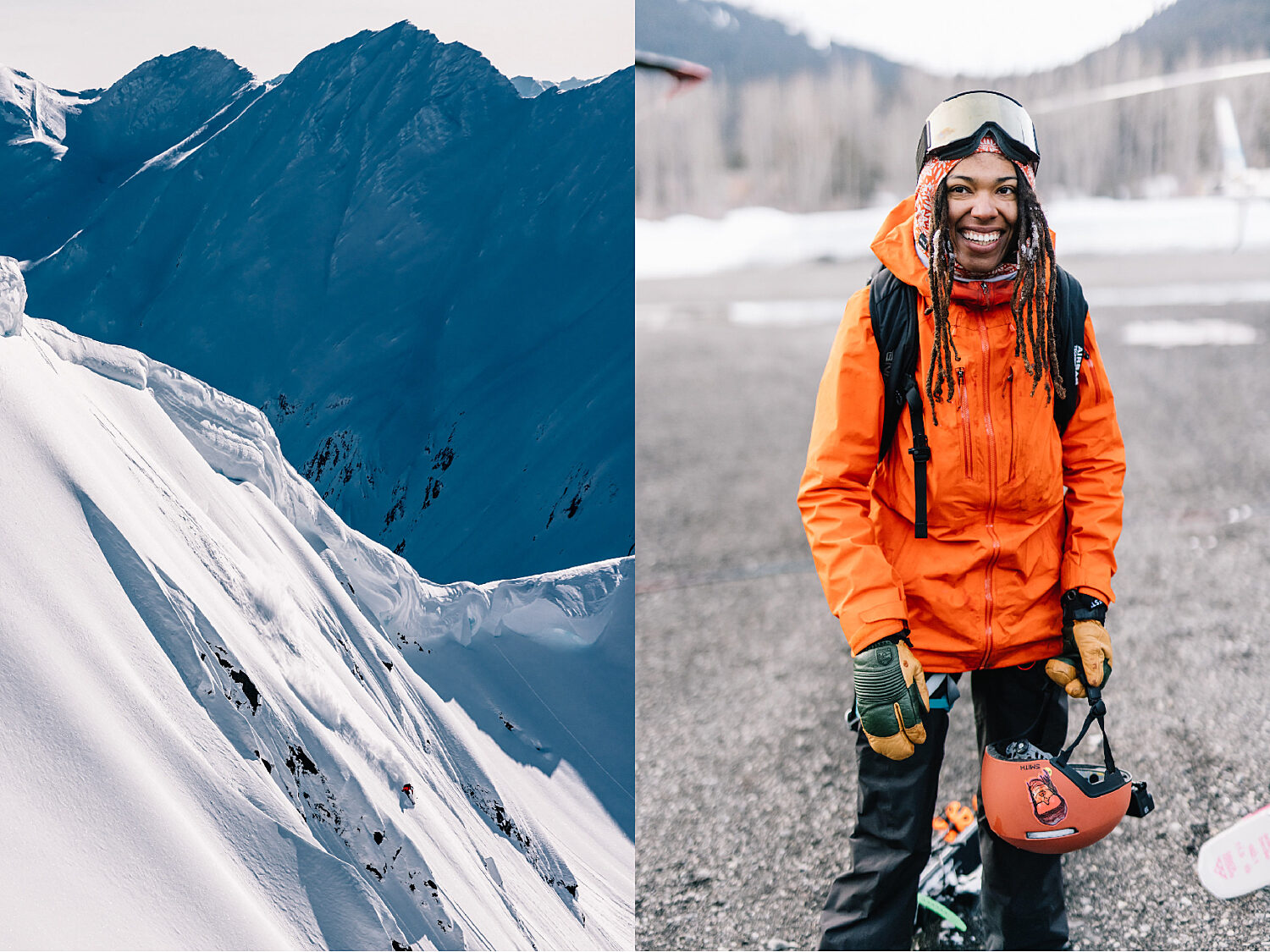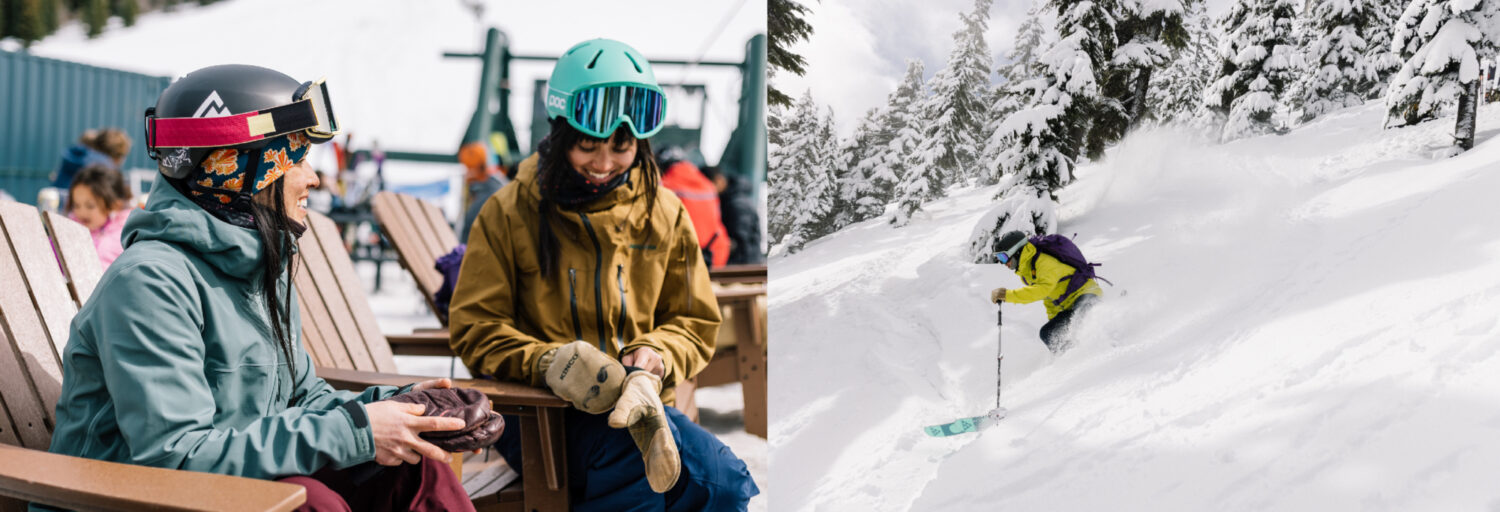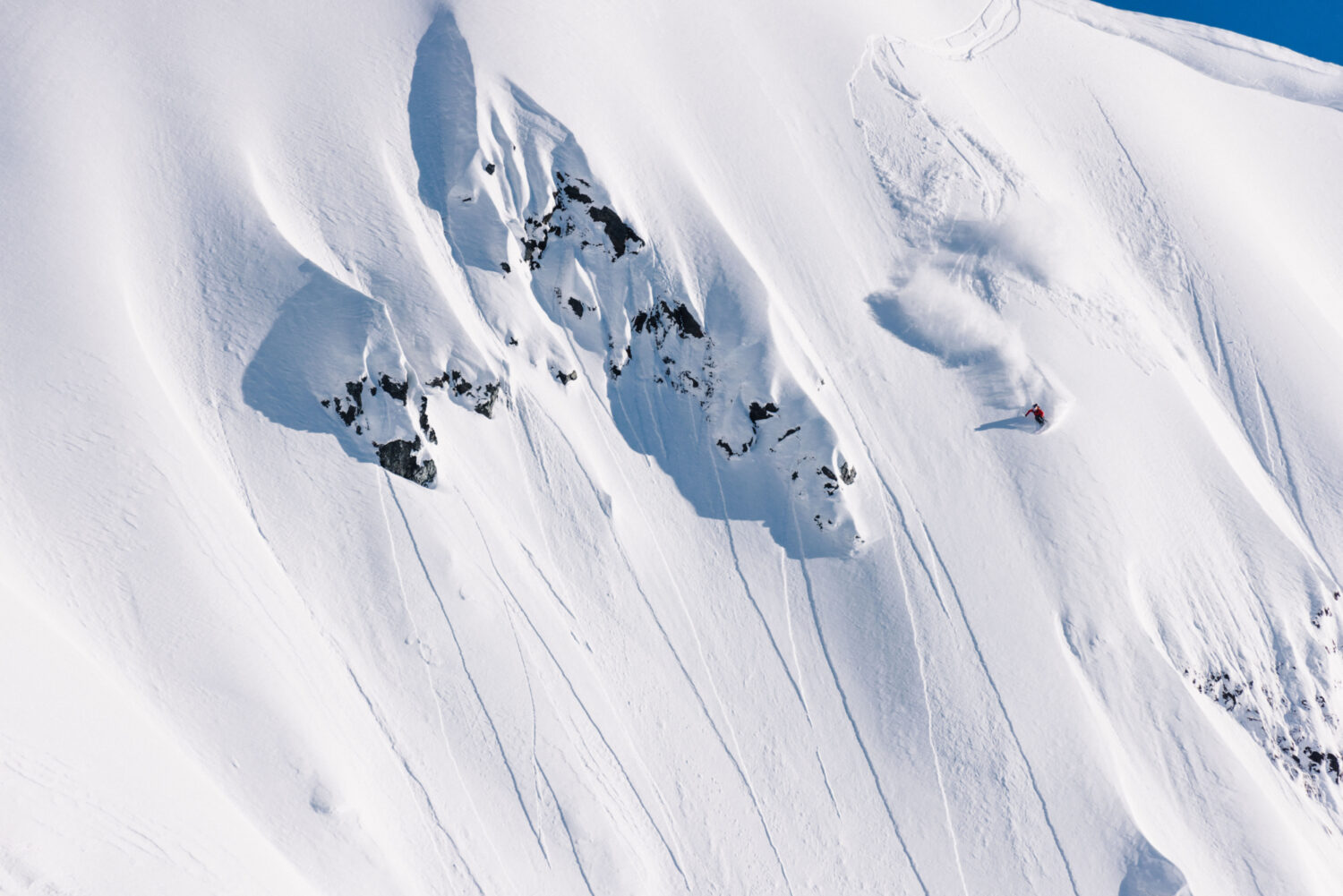Composed in a perfect frame on screen, professional athlete and artist Brooklyn Bell traverses on skis just below a classic Alaskan ridgeline, slough falling away from beneath her and cascading down the thousands of feet she’s preparing to descend. As she skis her line, the camera view transitions between GoPro shots of her skis cutting through untouched powder and a wide view that places her in the vast physical context of the Chugach Mountains.
She gets to the bottom of the run and fist bumps pro skier Michelle Parker, who she’s skiing with in this segment of NEXUS, a 2022 all women’s ski film. Snow is caked onto the dreads pulled out from either side of Bell’s helmet, and her smile is full and radiant. It’s a stunning capture of a perfect line in one of the most quintessential venues for big mountain ski films, but there’s more to it than that.






 MORE FROM BOMB SNOW
MORE FROM BOMB SNOW




